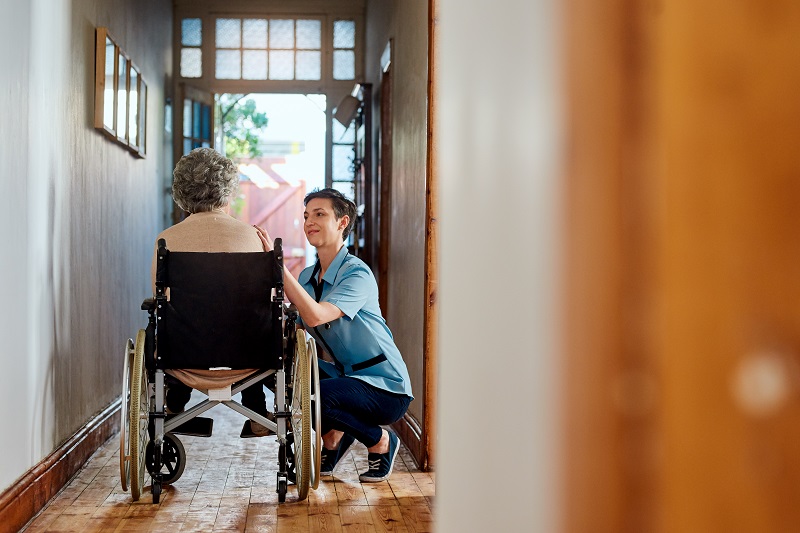 Healthcare organisations around the world are faced with tightening budgets, staff shortages, and rising demand fuelled by an aging population with more and more chronic ailments.
Healthcare organisations around the world are faced with tightening budgets, staff shortages, and rising demand fuelled by an aging population with more and more chronic ailments.
In addition to this, in response to lack of treatment for chronic diseases during the COVID-19 pandemic, patients with conditions that have significantly worsened and require more care are now flooding medical facilities everywhere.
With efficiency and productivity driving budget considerations, both national and privately-owned medical facilities are increasingly turning to Unified Communications (UC) to ensure that healthcare practitioners (HCPs) are able to continue providing top-quality care and driving positive patient outcomes.
Specifically, in critical healthcare environments where teams communicate from different levels in often very large, distributed environments, voice quality is a key differentiator.
Clear voice is key to getting medication administered correctly, in the right dosage, or at the right time.
Making yourself heard
A scrambled or partial message that leads clinicians or nurses to mishearing or missing critical calls is just not an option in this fast-paced environment.
And, as a result, enterprise mobility solutions within a UC environment are having a tangible impact on clinicians can spend less time rushing back to offices and desks to input information on a desktop PC, and more time tending to patients.
In critical healthcare environments where teams communicate from different levels in often very large, distributed environments, voice quality is a key differentiator
Reports suggest that an average 12-hour day shift will require a nurse to walk about five miles between visiting the pharmacy, checking doses, and updating clinical records; so medical staff can have a significant proportion of their day taken up by travel time and administrative tasks.
By allowing busy nurses to call up drugs from the pharmacy directly from the patient bedside, or log treatment times and dosages directly from their portable devices wherever they are, healthcare staff can spend far more time with their patients, improving their overall experience and building trust.
Unified Communications tools are helping to deliver clear, concise information when and where it is needed
Some hospitals have prevented staff from taking mobile devices into restricted areas such as wards or pharmacies to protect sensitive patient data or, more specifically, avoid the risk of patients inappropriately accessing confidential information.
But, with enterprise devices that can be put into ‘lockdown’ mode while not in use, staff are able to carry their device with them throughout their shift.
Automated adherence to mandatory clinical workflows and interoperability with leading platforms and medical applications allows staff to confirm medications and access, update, and share electronic health records (EHRs) and clinical information without leaving the patient’s side.
Enterprise mobility solutions within a UC environment are having a tangible impact on clinicians can spend less time rushing back to offices and desks to input information on a desktop PC, and more time tending to patients
Ensuring that HCPs are always connected is not just an important productivity and patient experience strategy, it also helps ensure care providers are kept safe.
Unfortunately, assaults on healthcare staff are disappointingly common and, on the rise, with a staggering 90% of emergency care staff reporting they have experienced physical violence.
Handsets that incorporate easy-to-action, hands-free alarms or motion sensors that issue alerts in case of an unexpected sharp fall followed by inactivity, ensure HCPs can carry out their work with peace of mind and may even be critical enablers for psychiatric nurses or night shift workers.
Another important use of sensor-activated alarms relates to patient safety and wellbeing: with systems that alert HCPs and carers when a patient has fallen or is unexpectedly moving about, it is possible for carers to intervene immediately when help is needed.
A novel and interesting use of this technology is being made in some care homes where dementia patients are able to enjoy more freedom of movement, without overburdening time-poor carers, who receive alerts when the patient is mobile or in danger.
In the fast-paced healthcare environment devices are often shared, passing from one user to another between shifts, ideally without stopping for lengthy recharging.
Providing staff with access to information and seamless, crystal-clear communication channels at their fingertips is key to supporting them in efforts to deliver cost-efficient, top-quality care while protecting patient information and personal safety
Devices should therefore be long lasting and support hot battery swaps which enable battery changes without functionality loss or device downtime.
Sharing devices also raises safety concerns relating to hygiene; specifically, handsets may easily come into contact with biological waste. For this reason, it is critical to ensure that HCPs are provided with devices that can be sterilised effectively without compromising them.
Similarly, because devices are carried around in a busy environment, handsets should be enterprise-grade to ensure they are robust enough to endure tough environments.
Patient outcomes are reliant on HCPs being able to do their best work without having to worry about rushing to desktops to fill out information, or having to make multiple calls to ensure they have received the right instructions concerning treatment or dosage. Providing them with access to information and seamless, crystal-clear communication channels at their fingertips is key to supporting them in efforts to deliver cost-efficient, top-quality care while protecting patient information and personal safety.
A strategic enterprise-grade UC system can help improve outcomes as well as operational effectiveness and worker wellbeing.
